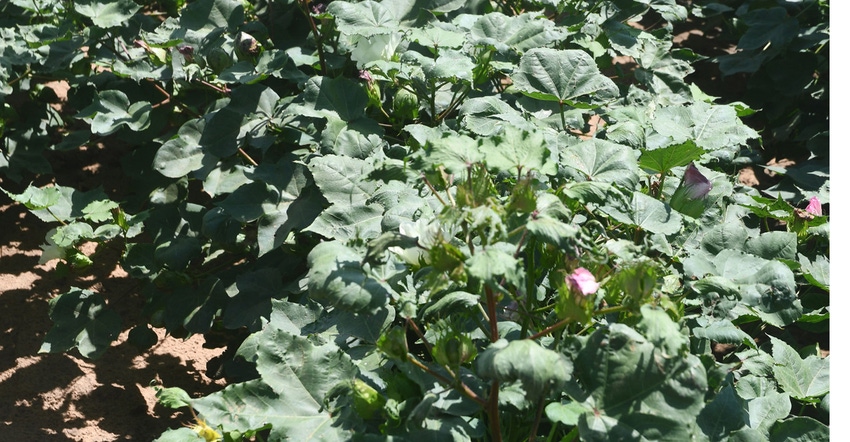
While cotton and soybean producers across Texas are getting the do’s and don’ts for applying new chemical formulations to their crop, the education is being extended to producers with sensitive or susceptible crops to protect their investments.
Texas A&M AgriLife Extension Service personnel have more than 70 meetings planned to train producers on working with the new auxin herbicide technology in cotton and soybeans as a part of label requirements, said Dr. Scott Nolte, AgriLife Extension state weed specialist in College Station.
The training is being conducted in accordance with new U.S. Environmental Protection Agency mandated application requirements for those using the new formulations of dicamba – Xtendimax, FeXapan and Engenia.
“This technology is being used and it is valuable to these industries,” Nolte said. “There are tools to raise awareness and reduce crop injury issues that everyone needs to take advantage of. When you have a mixture of valuable crops growing in the same region, we need to work together. We want to provide everyone the tools to work with their neighbors and help prevent injury.”
Nolte said the training and success of using this new technology can be enhanced if producers raising crops with a sensitivity to the dicamba formulations mark the location of their crops by using a combination of a mobile app and website to delineate their field boundaries.
The Flag the Technology program, a partnership between Texas A&M AgriLife and the Texas Plant Protection Association, is outlined on a fact sheet at http://bit.ly/2j9Sce0.
Hit the Target, which began in 2017 and is offered by Texas A&M AgriLife Research, is a website where crop locations can be marked for others to see, said Dr. Bob Coulson, AgriLife Research entomologist, College Station.
Hit the Target is currently implemented in Texas. This site features all crops – specialty, organic, conventional with no herbicide technology traits and herbicide-tolerant – using the color-coded Flag the Technology.
All users must register with Hit the Target for access to view crop sites and associated information, add crop sites, and record future and completed pesticide applications for a site, Coulson said.
Growers can share site-specific information with crop consultants and applicators, and grant access to applicators for adding pesticide application information, he said. For convenience to users, Hit the Target can be accessed directly from https://hitthetarget.tamu.edu or through the Flag the Technology mobile app available in iTunes and Google Play stores.
“The new label says the producer who is planning to apply one of these new dicamba formulations must survey their surrounding area to see if there are sensitive crops nearby,” Nolte said. “Each producer must document they have done that or document they have gone to a ‘sensitive crop’ registry for their state before application of these herbicides.”
Producers with sensitive crops such as grapes, vegetables, watermelons and traditional cotton can make the system more effective by using the application or similar sites, Nolte said.
“There’s a need for those with conventional cotton, row crops sensitive to dicamba and especially vineyards and high value vegetable crops to utilize this technology to help ensure they don’t receive any damages,” he said. “If they understand it’s a tool to keep someone from spraying nearby, they should get value from marking their field.”
Nolte said crops such as pecans and peanuts might only have visible detection of damage like crinkled leaves. However, more sensitive crops could see yield reductions if they are subjected to higher rates of drift of auxin herbicides. Sometimes, a buyer may even reject an entire field if the outer edges are injured.
The label clearly outlines wind speeds and directions for spraying from the sensitive crops, as well as providing guidelines for using buffers, he said.
The Flag the Technology mobile app directs users to the Texas sensitive crops technology and is another tool to help producers be good neighbors and work together, Nolte said.
About the Author(s)
You May Also Like




